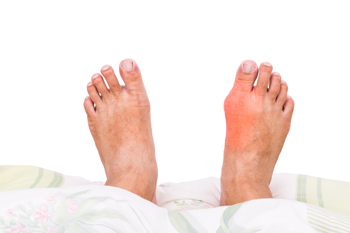How Common Are Bunions?
Monday, 30 November 2020 00:00A bunion is a type of foot deformity in which a bony bump forms on the side of the foot near the base of the big toe. Bunions develop slowly, as pressure on the joint at the base of the toe causes the toe to move out of place. Although bunions can sometimes be embarrassing, if you have them, you aren’t alone. About a third of adults in the United States have bunions. Bunions may cause foot pain, stiffness, redness, or swelling and tend to worsen over time, potentially making wearing your regular shoes, or even walking, more difficult. Seeking treatment can help. Treatment options may include wearing orthotic insoles and wider shoes, taking oral medications to relieve pain, or wearing special braces or pads on the foot. In more severe cases, surgery may be an option. If you have bunions, consult with a podiatrist to determine which treatments are right for you.
If you are suffering from bunions, contact Joseph D. Ruffo, DPM, PC of New York. Our doctor can provide the care you need to keep you pain-free and on your feet.
What Is a Bunion?
A bunion is formed of swollen tissue or an enlargement of boney growth, usually located at the base joint of the toe that connects to the foot. The swelling occurs due to the bones in the big toe shifting inward, which impacts the other toes of the foot. This causes the area around the base of the big toe to become inflamed and painful.
Why Do Bunions Form?
Genetics – Susceptibility to bunions are often hereditary
Stress on the feet – Poorly fitted and uncomfortable footwear that places stress on feet, such as heels, can worsen existing bunions
How Are Bunions Diagnosed?
Doctors often perform two tests – blood tests and x-rays – when trying to diagnose bunions, especially in the early stages of development. Blood tests help determine if the foot pain is being caused by something else, such as arthritis, while x-rays provide a clear picture of your bone structure to your doctor.
How Are Bunions Treated?
- Refrain from wearing heels or similar shoes that cause discomfort
- Select wider shoes that can provide more comfort and reduce pain
- Anti-inflammatory and pain management drugs
- Orthotics or foot inserts
- Surgery
If you have any questions, please feel free to contact one of our offices located in Sea Cliff and Babylon, NY . We offer the newest diagnostic and treatment technologies for all your foot care needs.





